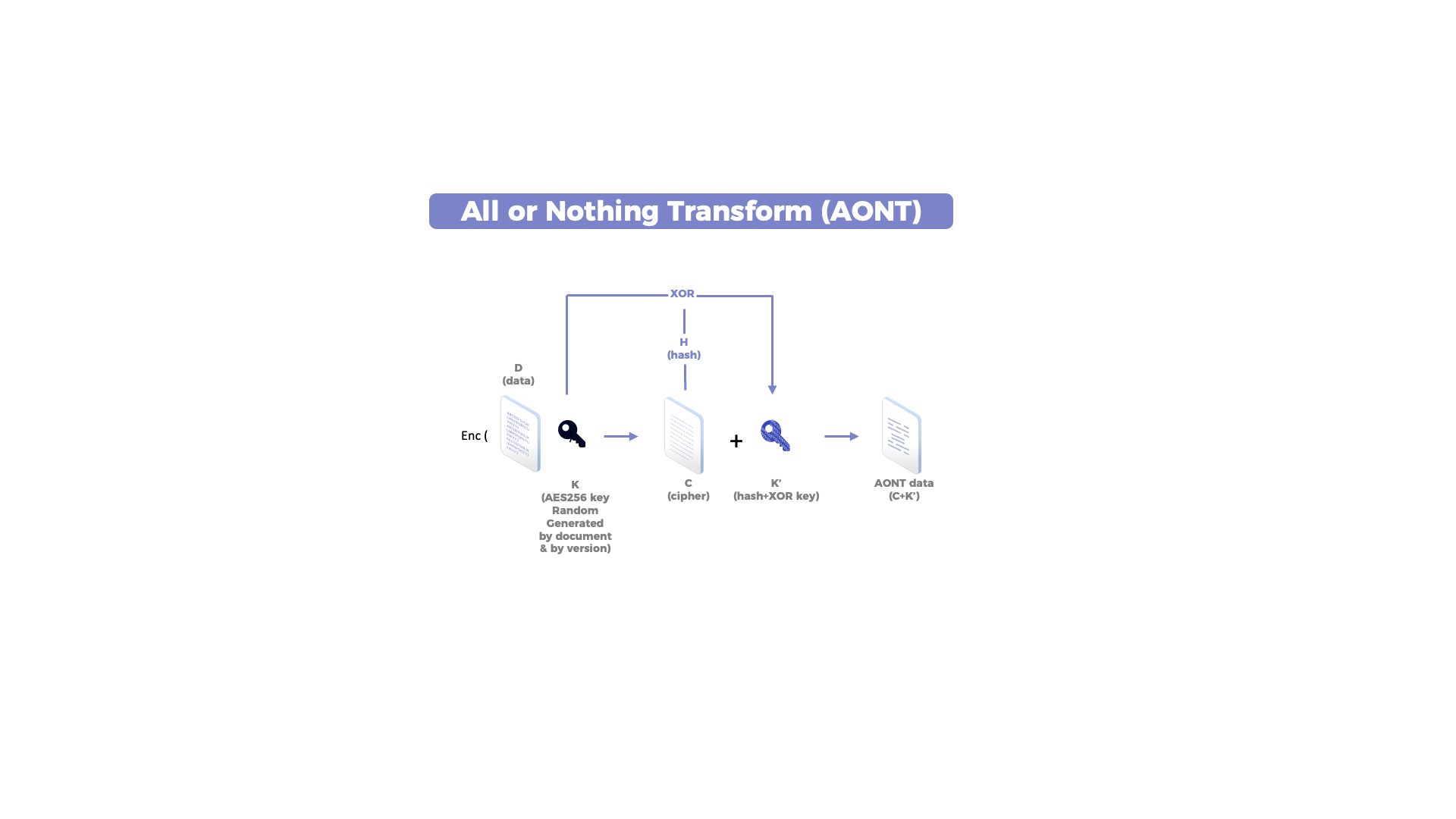Astran's Shuffling: All or Nothing Transform Algorithm
An all-or-nothing transform (AONT) is a cryptographic primitive that transforms data (D) into cipher (C) in such a way that it is impossible to recover the original data (D) without knowing the entire cipher (C): in clear we need the full cipher (C) to get back the original information; if we can't access a the entire cipher (C), even if missing a very small part, the original data (D) can't be retrieved.
AONTs work by applying a random transformation. This transformation is irreversible without knowing the key (K), so even if an attacker obtains a portion of the cipher (C), they will not be able to recover any information about the data.
AONTs have several advantages over traditional encryption methods. First, they are more efficient, an auto-sufficient for managing the key. Second, they are more secure, as they are resistant to attacks that reveal partial information about the cipher (C). Third, they are more versatile, as they can be used with any type of data.
The following figure shows how this algorithm has been implemented by Astran A random AES256 key (K) is generated by document version, it is used to encrypt the original data (D) to create a cipher data (C). This cipher is then hashed, generating the hash (H) that is XORed with the key (K), obtaining K'. The concatenation of C and K' create the AONT data.
 Figure: All or Nothing Transform algorithm
Figure: All or Nothing Transform algorithmAONTs are a powerful cryptographic primitive that can be used to improve the security of a wide variety of applications.